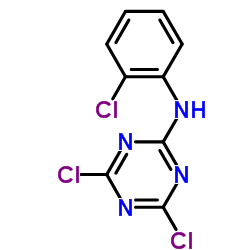Photoinduced addition of the fungicide anilazine to cyclohexene and methyl oleate as model compounds of plant cuticle constituents.
Nu Zhang, Xinjian Wu, Lixuan Yang, Feizhe Xiao, Heng Zhang, Aidong Zhou, Zhengsong Huang, Suyun Huang
Index: Chemosphere 41(9) , 1401-6, (2000)
Full Text: HTML
Abstract
Photoreactions, initiated by sunlight irradiation, between organochlorine pesticides and olefinic compounds of plant cuticles have been postulated. Concerning the formation of bound residues, which so far have not been detectable by common analytical techniques, photoaddition reactions are of main interest. In order to study the photochemical behavior of chlorinated fungicides, anilazine was irradiated in cyclohexene and methyl oleate as model compounds for olefinic plant cuticle constituents. Anilazine extensively reacted with the cis-double bond of both model compounds via radical mechanisms. In addition to a dechlorinated photoproduct several addition products were formed showing plausible reaction pathways for the formation of bound residues in plant cuticles. Photoproducts were isolated by preparative HPLC and analyzed by HPLC, MS, 1H-, and 13C-NMR.
Related Compounds
| Structure | Name/CAS No. | Molecular Formula | Articles |
|---|---|---|---|
 |
anilazine
CAS:101-05-3 |
C9H5Cl3N4 |
|
Long-term persistence of various 14C-labeled pesticides in s...
2012-09-01 [Environ. Pollut. 168 , 29-36, (2012)] |
|
Dry-wet cycles increase pesticide residue release from soil.
2012-09-01 [Environ. Toxicol. Chem. 31(9) , 1941-7, (2012)] |
|
Allergic contact dermatitis from a lawn care fungicide conta...
1997-03-01 [Am. J. Contact Dermatitis 8(1) , 47-8, (1997)] |
|
An outbreak of contact dermatitis in farm workers.
1985-08-01 [J. Am. Acad. Dermatol. 13(2 Pt 1) , 220-3, (1985)] |
|
Microbial release and degradation of nonextractable anilazin...
1999-09-01 [J. Agric. Food Chem. 47(9) , 3905-10, (1999)] |